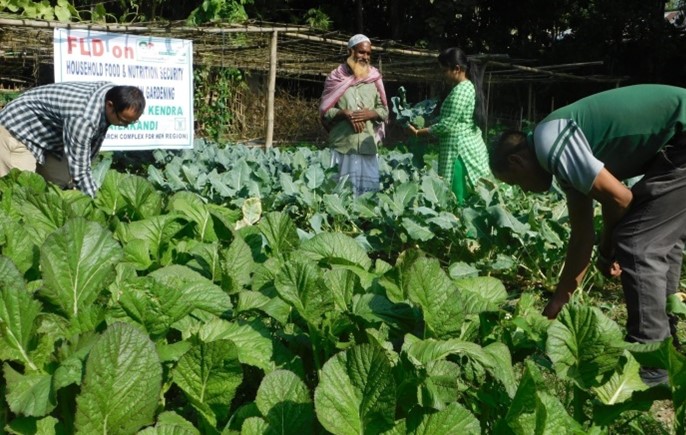Household Food and Nutrition Security by Nutrition Gardening
Mean energy intake by different age groups
The percentage increase in energy intake was found to be 26.9 in children (4- 9 years), 14 % in early adolescent (10 – 14 years), 16.7 % in adolescent (14 – 19 years) and 26.2 % in above 19 years. This can be attributed to improved diet knowledge due awareness about health and nutrition and increase in nutrient intake due to easy availability and direct access to vegetables and fruits after establishment of nutrition garden.
Mean vegetables and fruits intake by different age groups
The percentage of vegetables intake has comparatively increased after establishing nutrition garden. In children (4- 9 years) the increase is 63.7 %, in early adolescent (10 – 14 years) is 60.5 %, in adolescent (14 – 19 years) is 58.5 % and in age group above 19 years is 67.4 %. This can be attributed as an impact of awareness programmes on health and nutrition after which nutrition garden was established and as a result, people has a direct access to variety of fresh vegetables including leafy vegetables.
The percentage of fruits intake has also comparatively increased after establishing nutrition garden. In children (4- 9 years) the increase is 72.9 %, in early adolescent (10 – 14 years) is 65.6 %, in adolescent (14 – 19 years) is 67.2 % and in age group above 19 years is 66.9 %. This drastic increase in fruits intake is also the result of various awareness programme after which many of the beneficiaries became health conscious and started including fruits from their nutrition garden.
Percentage of adoption of the technology
Out of the total selected household of 200 numbers, 153 numbers of household (76.5 %) adopted the technology i.e. they are still practicing nutrition garden and 36 numbers of households (18 %) are still practicing kitchen garden with very few numbers of crops whereas 11 numbers of households (5.5 %) neither has a nutrition garden nor a kitchen garden


